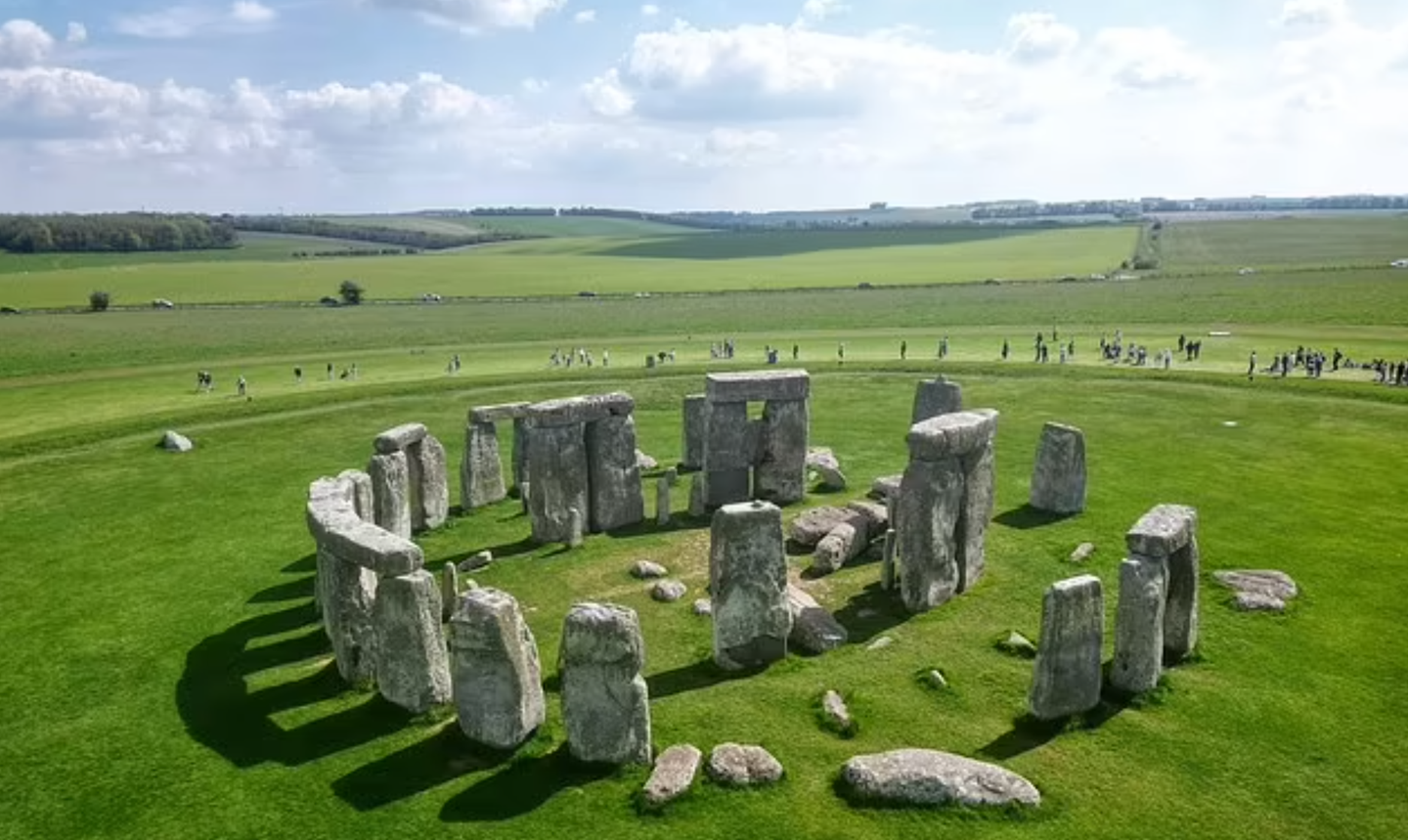Researchers discover why Stonehenge was rebuilt thousands of years ago
Stonehenge’s distant stones reveal its role as a unifying monument in ancient Britain, blending politics, religion, and astronomy.

Stonehenge’s construction required immense effort, bringing stones from as far as 140 miles away. (CREDIT: Alzay)
The origins of Stonehenge have long been shrouded in mystery, captivating researchers and the public alike. New discoveries now shed light on the cultural and political significance of this ancient monument.
A recent study, published in Archaeology International, identifies the six-tonne Altar Stone at the center of Stonehenge as originating from northern Scotland. This finding confirms that all of Stonehenge’s stones were transported over vast distances, underscoring its role as a monument of unification in Neolithic Britain.
A Monument of Unity
Stonehenge’s construction required immense effort, bringing stones from as far as 140 miles away in southwest Wales and up to 621 miles from northeast Scotland. Unlike other British stone circles, which use local materials, Stonehenge’s distant origins symbolize connections among different regions.
According to Professor Mike Parker Pearson of University College London, this unique choice suggests a political as well as religious purpose: “The stone circle may have served as a monument of unification, celebrating eternal links between peoples, ancestors, and the cosmos.”
Professor Richard Bevins of Aberystwyth University emphasized the interdisciplinary approach of their research: “Our geological investigations resemble forensic science. The combined expertise of our team has allowed us to pinpoint the sources of the bluestones and now the Altar Stone.”
Neolithic Collaboration
The Altar Stone’s placement and characteristics link it to northeast Scotland’s “recumbent stone circles,” suggesting close ties between these distant regions. This connection may represent alliances or collaborations between Neolithic communities. Archaeologists propose that these stones were gifts, solidifying political and cultural unity.
Related Stories
Dating the arrival of the Altar Stone at Stonehenge to approximately 2500 BCE aligns with the monument’s second phase of construction. During this period, massive sarsen stones formed an outer circle and inner horseshoe, framing the midwinter solstice sunset.
This rebuilding effort coincided with increasing interactions between indigenous Britons and newcomers from mainland Europe, who introduced metalworking and other technologies. Researchers suggest that Stonehenge’s expansion was a response to these influences, aiming to unify local communities.
The Role of Solstice Alignments
Stonehenge’s alignment with the solstices has long intrigued researchers. The midwinter solstice, in particular, held significant importance. Neolithic communities gathered for feasts at nearby Durrington Walls, marking the changing seasons with rituals and ceremonies. During this period, the setting sun aligned with the Altar Stone and the monument’s tallest uprights, a feature that continues to attract modern crowds.
Professor Pearson noted that nearly half of the individuals buried at Stonehenge originated outside Salisbury Plain. These findings reinforce the theory that Stonehenge was a hub for people across Britain, fostering connections through shared rituals and architecture.
“The similarities between Stonehenge’s architecture and northern Scotland now make more sense,” Pearson said. “This research helps solve the puzzle of why these distant places shared so much in common.”
Transporting Stonehenge’s monoliths remains an engineering marvel. The wheel, though invented, had not yet reached Britain. Moving the stones required the coordinated efforts of hundreds or thousands of people, highlighting the societal significance of the project.
The smaller bluestones were sourced from Wales’ Preseli Hills, while the Altar Stone’s composition matches Old Red Sandstone found in the Orcadian Basin of northeast Scotland. Researchers determined this with “95% accuracy” through mineral analysis. These findings underscore the monument’s symbolic value as a unifying force, bringing together diverse regions.
Stonehenge served multiple purposes over centuries. It functioned as a burial ground, an observatory, and possibly a solar calendar. Its construction around 2500 BCE marked a period of heightened social complexity and interregional collaboration.
By incorporating materials from across Britain, Stonehenge embodied the idea of unity in a fragmented landscape.
Note: Materials provided above by The Brighter Side of News. Content may be edited for style and length.
Like these kind of feel good stories? Get The Brighter Side of News' newsletter.
Joseph Shavit
Head Science News Writer | Communicating Innovation & Discovery
Based in Los Angeles, Joseph Shavit is an accomplished science journalist, head science news writer and co-founder at The Brighter Side of News, where he translates cutting-edge discoveries into compelling stories for a broad audience. With a strong background spanning science, business, product management, media leadership, and entrepreneurship, Joseph brings a unique perspective to science communication. His expertise allows him to uncover the intersection of technological advancements and market potential, shedding light on how groundbreaking research evolves into transformative products and industries.



